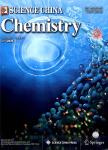Effects of Cu^(2+) on characteristic of SV currents
Effects of Cu^(2+) on characteristic of SV currents作者机构:Key Laboratory of Chemical Biology and Molecular Engineering of Ministry of Education Institute of Molecular Science Shanxi University Taiyuan China Institute of Environment Science Taiyuan University of Science and Technology Taiyuan China
出 版 物:《Science China Chemistry》 (中国科学(化学英文版))
年 卷 期:2006年第49卷第6期
页 面:560-564页
核心收录:
学科分类:081704[工学-应用化学] 07[理学] 08[工学] 0817[工学-化学工程与技术] 0703[理学-化学] 070301[理学-无机化学]
基 金:support by the National Natural Science Foun-dation of China(Grant No.20637010) the Shanxi Pro-vincial Natural Science Foundation for Youth(Grant No.20041032)
主 题:the patch-clamp technique, vacuolar, Cu2+, SV channel.
摘 要:Applying the patch-clamp technique to vacuoles from Radish we studied the effects of Cu2+ on Slow Vacuolar (SV) current’s characteristic. Our results show that Cu2+ in bath solution at higher concentration inhibits SV currents and the percentage of inhibition increases with increasing concentration and changes with different voltage. When at lower concentration, Cu2+ significantly promotes the SV currents and the promotion ratio decrease with increasing voltage. At the same time, the time constants of activation become lesser after adding Cu2+. These results show that there may be some Cu2+ binding sites on SV channels and binding to which can change SV current’s characteristic.



